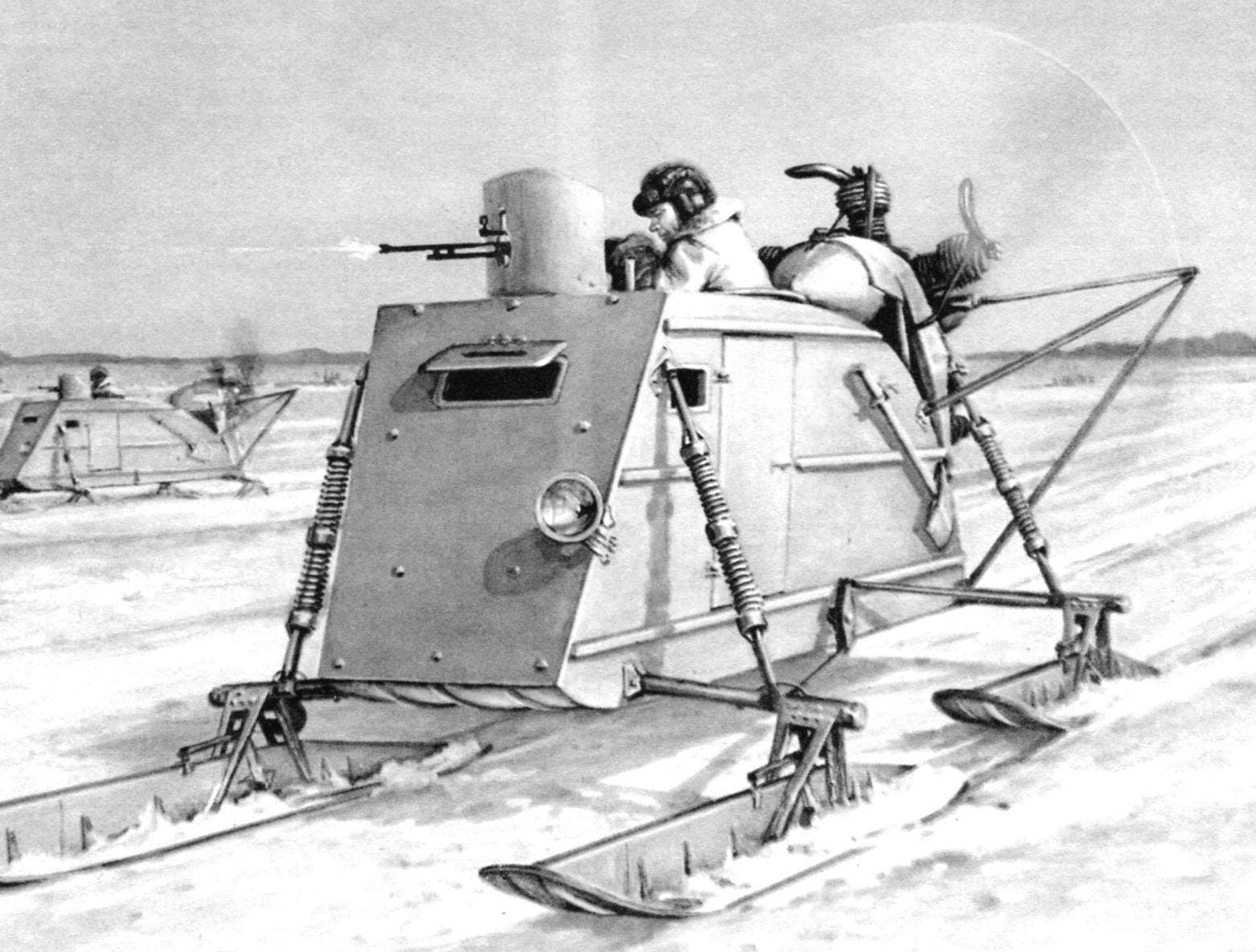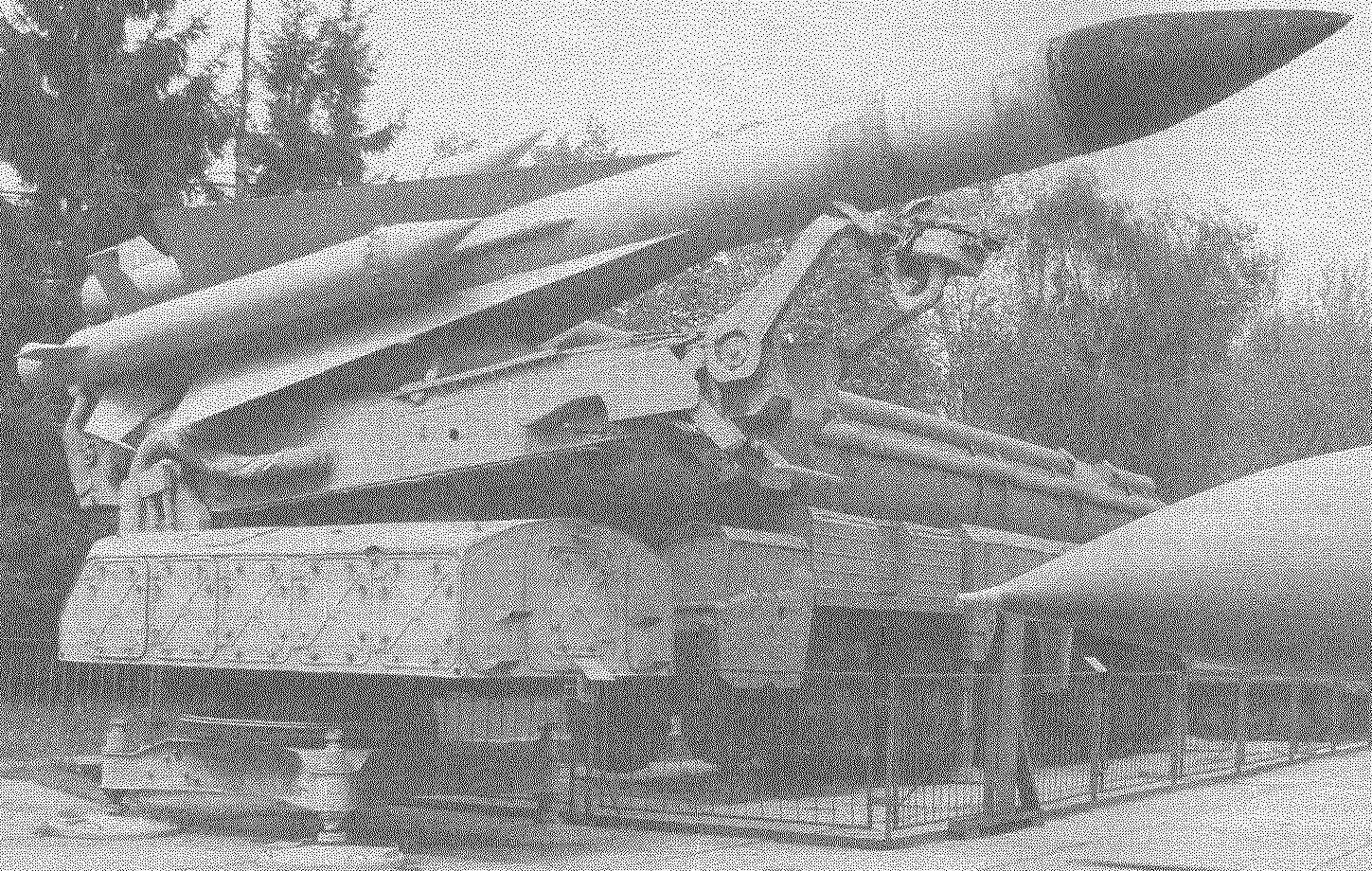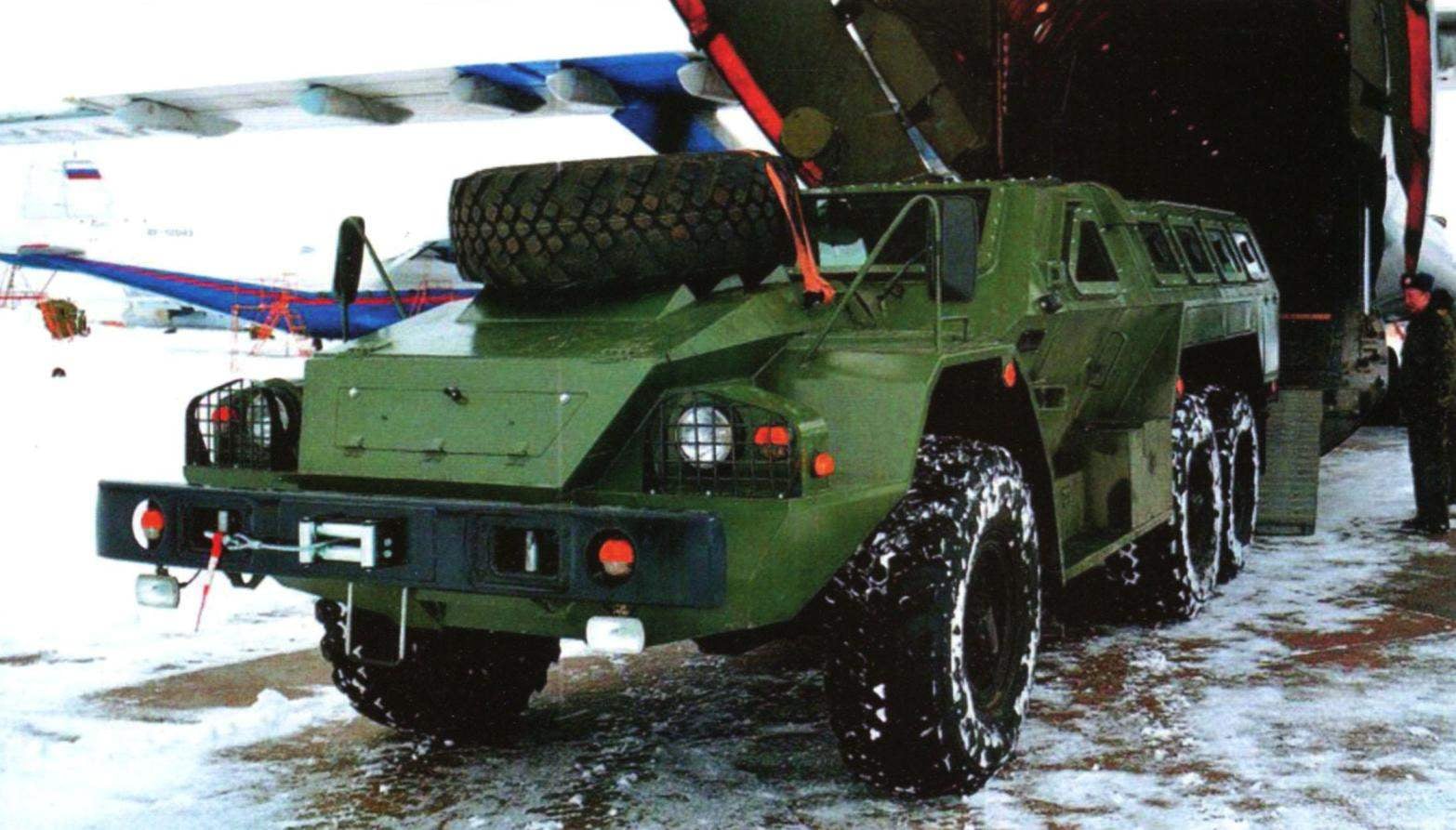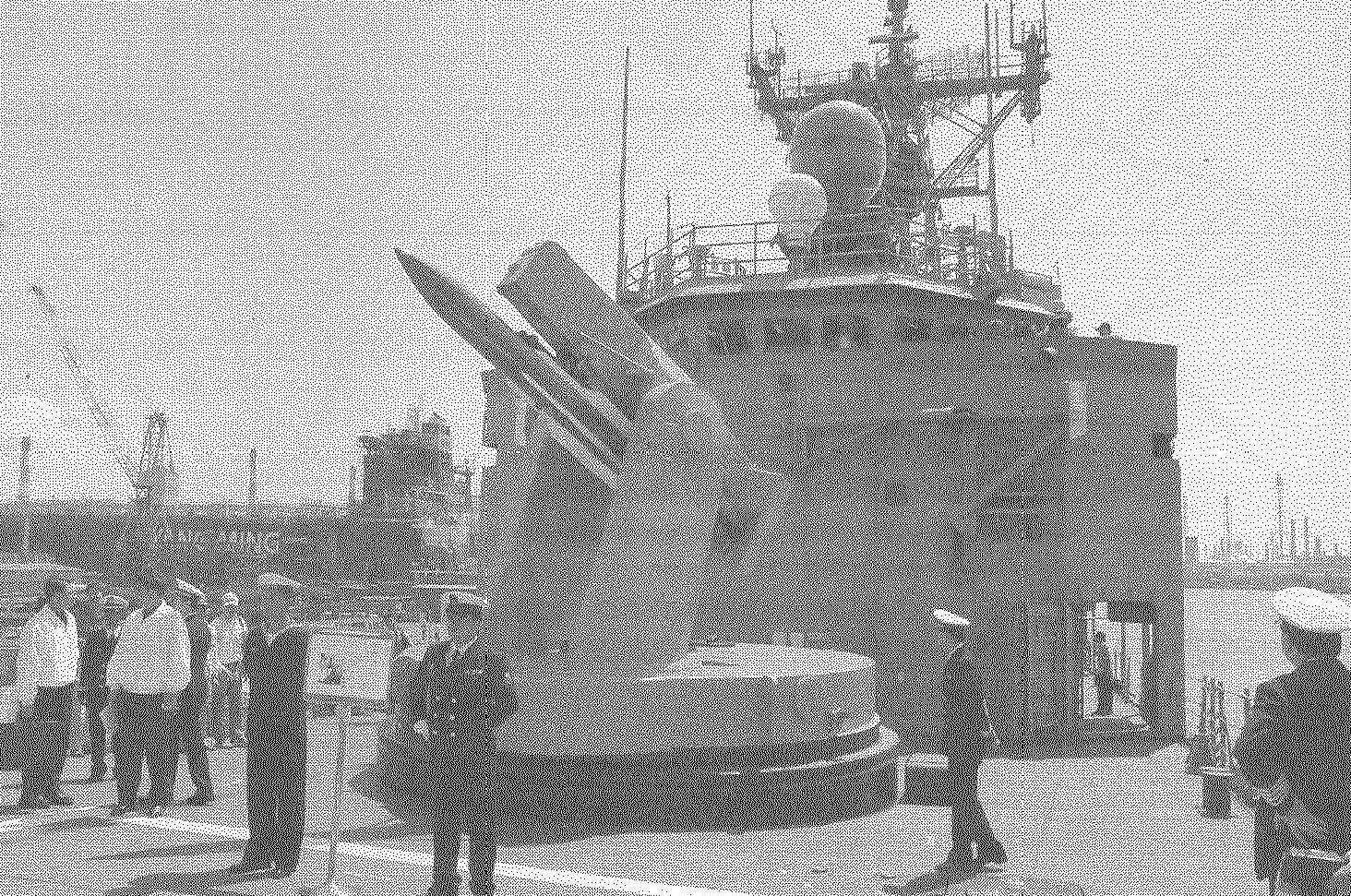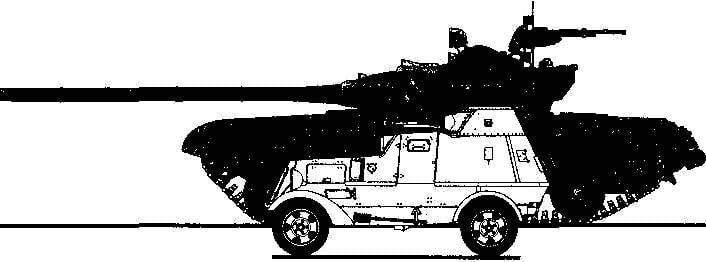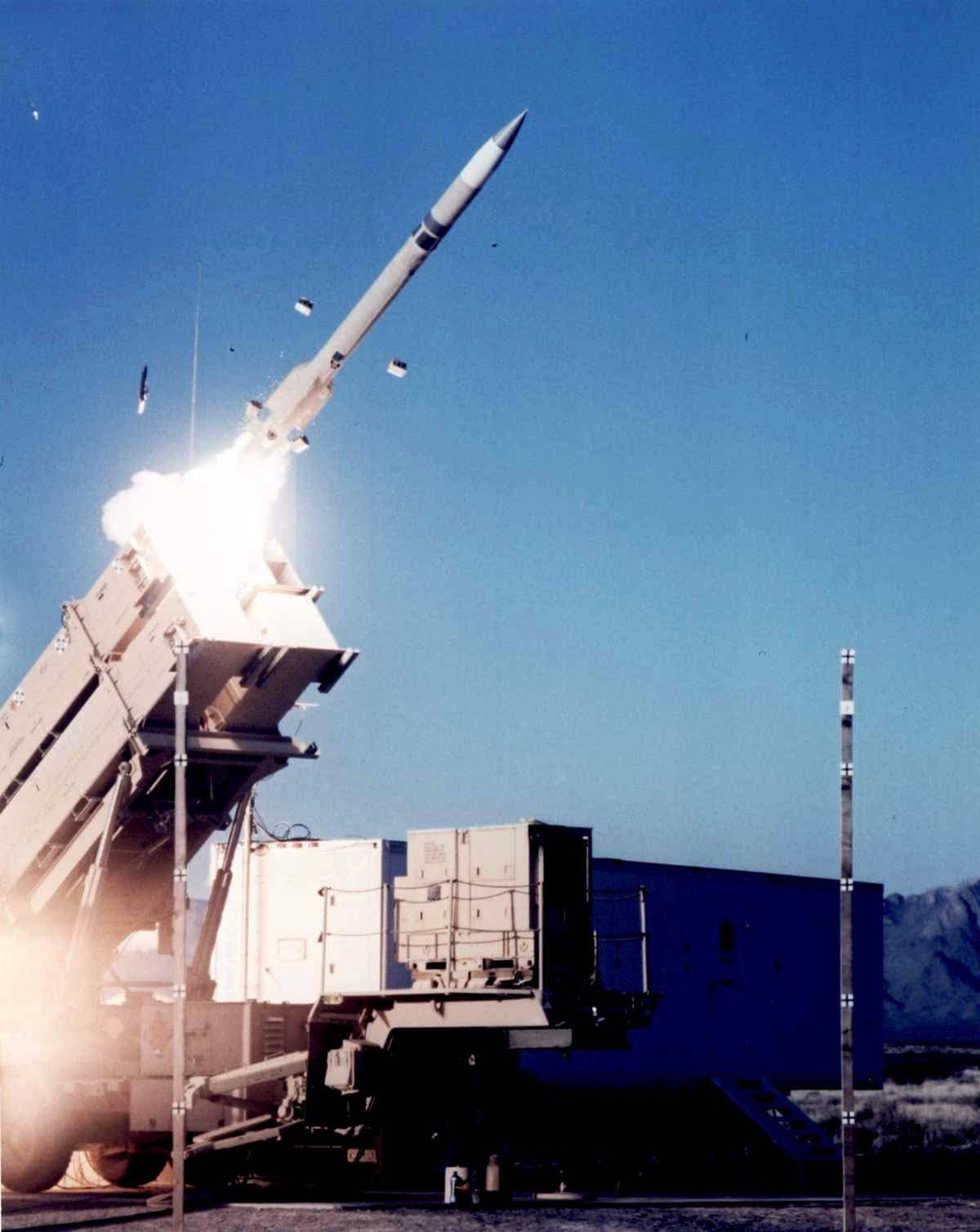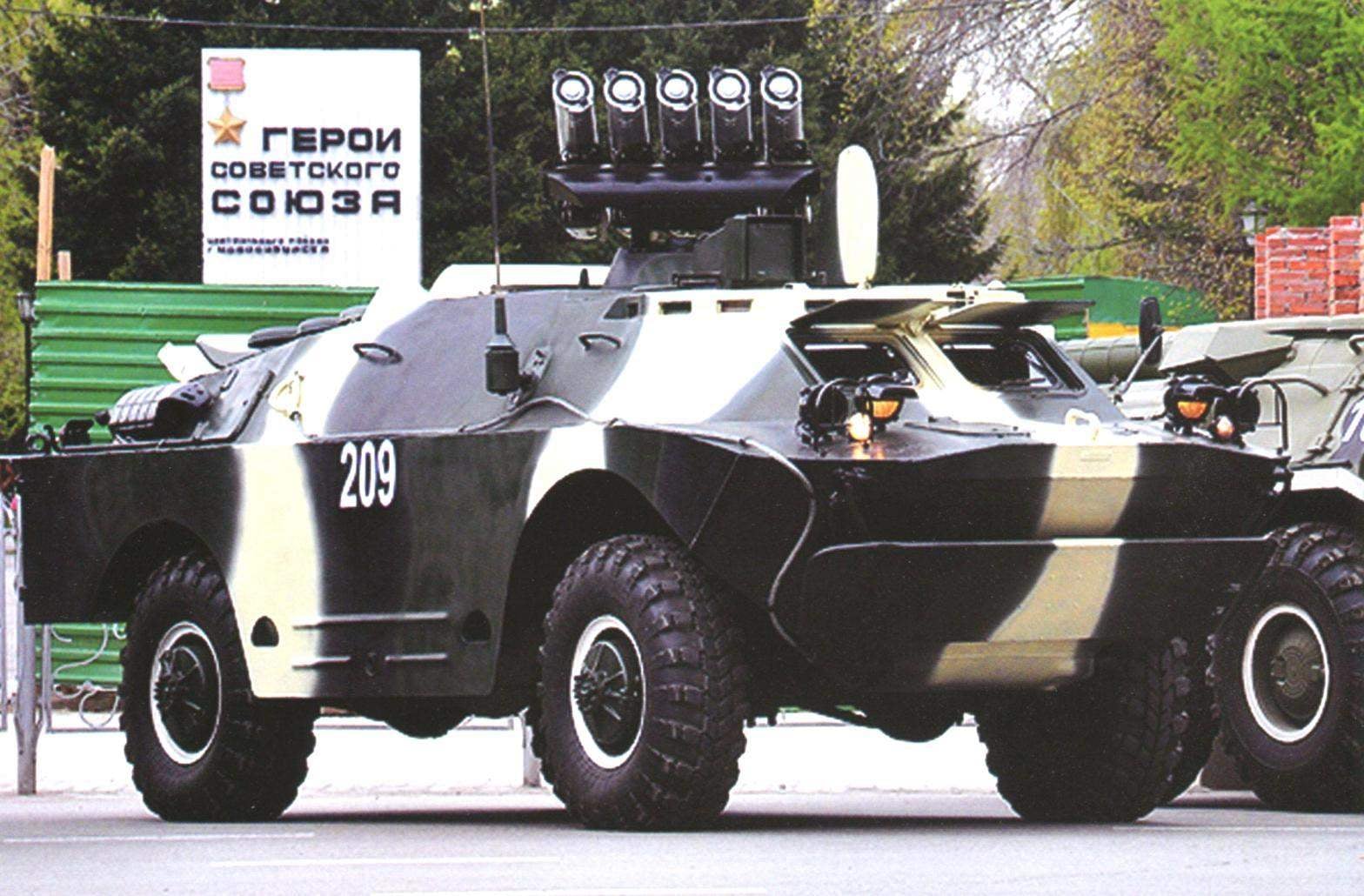 The NKL-26 was designed to carry a crew of two people – the commander of the machine (while running in combat operations of the function arrow) and a driver-mechanic. The body of the snowmobile hardwood, closed type, with four independently suspended steerable skis. The frame is recruited from transverse frames and longitudinal stringers and trimmed with plywood. The cross section of the body had the appearance of an inverted trapezoid. The front part defended fortified at an angle of 60° to the vertical armor plate shield. In it there was a hatch with a flap, which made a narrow slot.
The NKL-26 was designed to carry a crew of two people – the commander of the machine (while running in combat operations of the function arrow) and a driver-mechanic. The body of the snowmobile hardwood, closed type, with four independently suspended steerable skis. The frame is recruited from transverse frames and longitudinal stringers and trimmed with plywood. The cross section of the body had the appearance of an inverted trapezoid. The front part defended fortified at an angle of 60° to the vertical armor plate shield. In it there was a hatch with a flap, which made a narrow slot.
Armor
THE CONQUEST OF “ANGARA”
 The adoption in December 1957 adopted the first option anti-aircraft missile system s-75 allowed her the lead developers of KB-1 A. A. Raspletin and OKB-2 PD Grushin to start the creation of air defense systems long range. By that time, similar developments were enough American “Bomark” English “Thunderbird”, the Soviet “Dal” the New system received the designation C-200, and a government decree authorizing its development was signed on 4 June 1958.
The adoption in December 1957 adopted the first option anti-aircraft missile system s-75 allowed her the lead developers of KB-1 A. A. Raspletin and OKB-2 PD Grushin to start the creation of air defense systems long range. By that time, similar developments were enough American “Bomark” English “Thunderbird”, the Soviet “Dal” the New system received the designation C-200, and a government decree authorizing its development was signed on 4 June 1958.
ARMORED “BULAT”
 The family of KAMAZ trucks filled up by the new special armored SBA-60-K2 “Bulat”. This war machine was created with the use of units, assemblies and series parts, KAMAZ-5350, commonly known as “Mustang”, which as a military truck was called to military service in 2002, the Mustang has a capacity of 6 tons, a curb weight of 15.4 tons; its 260-horsepower diesel engine allows to reach the speed of 100 km/h. It is a three-axis front-engined car with permanent all-wheel drive (6×6) driven front wheels and two closely spaced rear axles. Carrier system – spar frame. Designed and manufactured by the Kama automobile plant.
The family of KAMAZ trucks filled up by the new special armored SBA-60-K2 “Bulat”. This war machine was created with the use of units, assemblies and series parts, KAMAZ-5350, commonly known as “Mustang”, which as a military truck was called to military service in 2002, the Mustang has a capacity of 6 tons, a curb weight of 15.4 tons; its 260-horsepower diesel engine allows to reach the speed of 100 km/h. It is a three-axis front-engined car with permanent all-wheel drive (6×6) driven front wheels and two closely spaced rear axles. Carrier system – spar frame. Designed and manufactured by the Kama automobile plant.
HAPPY “SEVEN”
 The su-7, were armed with Soviet air force, is a typical representative of tactical aircraft of its time. Being built at the beginning of the cold war as a fighter, he turned into a fighter-bomber and a carrier of nuclear weapons. Su-7 is constantly improving his combat capabilities were expanded and the flight characteristics were improved, which allowed the aircraft to become rather successful commercial project and long enough to stay in service in many countries. Its rugged and reliable design became the basis for the development of many interesting projects, one of which was the aircraft with variable sweep-wing su-17.
The su-7, were armed with Soviet air force, is a typical representative of tactical aircraft of its time. Being built at the beginning of the cold war as a fighter, he turned into a fighter-bomber and a carrier of nuclear weapons. Su-7 is constantly improving his combat capabilities were expanded and the flight characteristics were improved, which allowed the aircraft to become rather successful commercial project and long enough to stay in service in many countries. Its rugged and reliable design became the basis for the development of many interesting projects, one of which was the aircraft with variable sweep-wing su-17.
THE SHIP’S “STANDARD”
 The appearance of the first combat aircraft was not immediately made adjustments to the fighting at sea. In world war I the sky over the sea rarely harbored a threat to warships. However, in the next world war, the aircraft were able to effectively fight with the battleships and cruisers, and submarines. And the next decade put the surface fleet of all countries faced with a tough choice — either the ships will be able to repel the aircraft and only appeared guided missiles, or they will go to the scene as an independent fighting force. Hence it is understandable the enthusiasm of the Americans, which in the 1950s they began to equip their ships a variety of anti-aircraft and first missiles.
The appearance of the first combat aircraft was not immediately made adjustments to the fighting at sea. In world war I the sky over the sea rarely harbored a threat to warships. However, in the next world war, the aircraft were able to effectively fight with the battleships and cruisers, and submarines. And the next decade put the surface fleet of all countries faced with a tough choice — either the ships will be able to repel the aircraft and only appeared guided missiles, or they will go to the scene as an independent fighting force. Hence it is understandable the enthusiasm of the Americans, which in the 1950s they began to equip their ships a variety of anti-aircraft and first missiles.SELF-PROPELLED ON WHEELS
 The first attempts to improve operational mobility artillery through the installation of various caliber guns on tracked or wheeled chassis has been made at the beginning of XX century. There was a certain bias towards the latter, that was no accident. Crawler tractors, and then the tanks were not only much more difficult technically, but much more expensive. Tactics combat use of armored units in 1920 — 1930-e years have not yet been worked out. The role and place of self-propelled artillery clearly were not visible, and most self-propelled artillery as such did not exist. So developers saw significant advantages crawler front wheel. Moreover, the automotive industry in that period had developed rapidly. New impetus for the creation of self-propelled guns on a wheeled chassis gave the appearance of vehicles. The most successful design of this kind admittedly French SPG chassis truck-terrain vehicle Laffly, armed with 47mm anti-tank gun.
The first attempts to improve operational mobility artillery through the installation of various caliber guns on tracked or wheeled chassis has been made at the beginning of XX century. There was a certain bias towards the latter, that was no accident. Crawler tractors, and then the tanks were not only much more difficult technically, but much more expensive. Tactics combat use of armored units in 1920 — 1930-e years have not yet been worked out. The role and place of self-propelled artillery clearly were not visible, and most self-propelled artillery as such did not exist. So developers saw significant advantages crawler front wheel. Moreover, the automotive industry in that period had developed rapidly. New impetus for the creation of self-propelled guns on a wheeled chassis gave the appearance of vehicles. The most successful design of this kind admittedly French SPG chassis truck-terrain vehicle Laffly, armed with 47mm anti-tank gun.
MISSILE “PATRIOT”
 Launched in 1963, work on the creation of Zenith rocket complex of average range “petriot” had as its main objective the replacement was on the US Army anti-aircraft missile complex (3RK) of the previous generations – “Nike-Hercules” and “hawk”. The main criteria underlying these works was the requirement of a minimum number of personnel and equipment to reduce life cycle cost, as well as the achievement of the characteristics required to repel air threats, the appearance of which is expected about the subsequent decade.
Launched in 1963, work on the creation of Zenith rocket complex of average range “petriot” had as its main objective the replacement was on the US Army anti-aircraft missile complex (3RK) of the previous generations – “Nike-Hercules” and “hawk”. The main criteria underlying these works was the requirement of a minimum number of personnel and equipment to reduce life cycle cost, as well as the achievement of the characteristics required to repel air threats, the appearance of which is expected about the subsequent decade.CROSSING, CROSSING — LEFT BANK, RIGHT BANK
 Development crossing-bridge means of engineering troops of Russia’s Armed Forces relied on the rich military-historical experience of the Russian army.
Development crossing-bridge means of engineering troops of Russia’s Armed Forces relied on the rich military-historical experience of the Russian army.
ANTI-TANK “CARTS”
 When developing a combat reconnaissance patrol vehicles (BRDM), the specialists of the design Bureau of the Gorky automobile plant in advance the possibility of creating on its basis a whole range of machines with unified mechanisms, machines and details. The main module was the unit of the power plant with the transmission. “Imposing” such a module housing of the original design was created and then various combat vehicles, including anti-tank missiles on the BRDM.
When developing a combat reconnaissance patrol vehicles (BRDM), the specialists of the design Bureau of the Gorky automobile plant in advance the possibility of creating on its basis a whole range of machines with unified mechanisms, machines and details. The main module was the unit of the power plant with the transmission. “Imposing” such a module housing of the original design was created and then various combat vehicles, including anti-tank missiles on the BRDM.
ANTI-AIRCRAFT “CHEETAH” FOR THE WEHRMACHT AND BUNDESWEHR

 The first German self-propelled anti-aircraft gun with the official name 2 cm FlaK auf Selbstfahrlafette 38(t) or Sd.Kfz.140 on tank chassis were developed in the fall of 1943, under the personal direction of Hitler; as the chassis was used by the Pz..Kpfw.38(t). Note that these tanks are not produced in Germany, they were created and produced in Czechoslovakia by CKD company (“Czech-Moravian Kolben Danek” – SKD) in Prague and was named TNHP-LT vz.38. The first of these was made in may 1939, They were considered light tanks, had a good, time, safety, a considerable speed, carrying a semi-automatic 37,2 mm gun Skoda A7. But it so happened that none of them were in the Czechoslovak army. The fact that in September of the same year, German troops occupied the Czech Republic. Released by this time the tanks were immediately accepted them into service under the designation Pz.Kpfw.38(t). Their production at the factory in Prague and admission to the Wehrmacht continued.
The first German self-propelled anti-aircraft gun with the official name 2 cm FlaK auf Selbstfahrlafette 38(t) or Sd.Kfz.140 on tank chassis were developed in the fall of 1943, under the personal direction of Hitler; as the chassis was used by the Pz..Kpfw.38(t). Note that these tanks are not produced in Germany, they were created and produced in Czechoslovakia by CKD company (“Czech-Moravian Kolben Danek” – SKD) in Prague and was named TNHP-LT vz.38. The first of these was made in may 1939, They were considered light tanks, had a good, time, safety, a considerable speed, carrying a semi-automatic 37,2 mm gun Skoda A7. But it so happened that none of them were in the Czechoslovak army. The fact that in September of the same year, German troops occupied the Czech Republic. Released by this time the tanks were immediately accepted them into service under the designation Pz.Kpfw.38(t). Their production at the factory in Prague and admission to the Wehrmacht continued.
